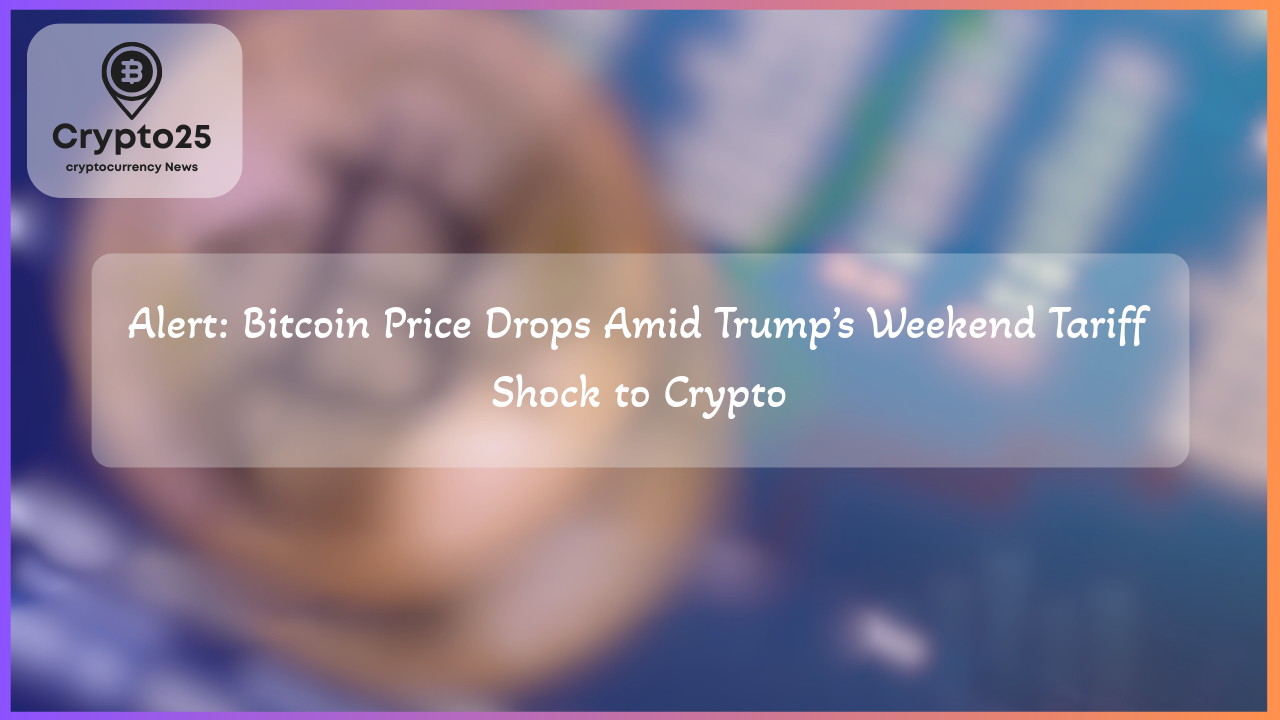
The cryptocurrency market faced a turbulent weekend as Bitcoin and other digital assets struggled to maintain stability in the wake of renewed global trade uncertainties. With shifting policy signals from the U.S. regarding tariffs on Chinese goods, crypto prices dipped noticeably, highlighting how macroeconomic factors continue to shape market sentiment and risk appetite among traders.
### Bitcoin Price Declines Amid Trade Policy Uncertainty
Bitcoin, the largest cryptocurrency by market capitalization, experienced a notable drop of over 2%, falling to $83,482 during Asian trading hours. This decline reversed some of the gains seen in the prior week during a period of relative market optimism. Unlike traditional equities, which began the week on a more positive note, digital assets appeared less resilient. Ethereum, the second-largest cryptocurrency, also fell below the $1,600 threshold, further contributing to the bearish sentiment across altcoins.
The weekend price movement coincided with mixed messages from the Trump administration about new trade tariffs targeting Chinese-made electronics, including smartphones and semiconductors. This uncertainty left the crypto market vulnerable as investors grappled with the long-term implications of escalating trade tensions on economic growth and risk assets like Bitcoin.
### Trade Policy Worries Weigh on Crypto Market Sentiment
The drop in Bitcoin prices follows contradictory statements from U.S. policy leaders over the future scope of tariffs on Chinese goods. Former President Trump clarified on social media over the weekend that while some electronics were temporarily spared from a 10% tariff regime, they would still fall under separate national security tariffs. This announcement created further confusion for market participants, highlighting geopolitical risks as an influential factor in crypto market dynamics.
Equity markets, on the other hand, responded with cautious optimism, as evidenced by a 1% rise in Nasdaq 100 futures and a 0.7% increase in S&P 500 futures during early trading. However, this upbeat sentiment failed to translate into the cryptocurrency market, where the potential for more aggressive trade policies fueled concerns about higher inflation and slowed institutional investment in crypto-related financial products like exchange-traded funds (ETFs).
### Institutional Hesitation and Fed Policy Add to Market Volatility
Geopolitical challenges were not the only factors weighing on Bitcoin and the broader cryptocurrency market. Analysts have also observed slowing institutional flows into U.S.-listed crypto ETFs, which had previously driven strong momentum in digital asset adoption. Compounding the issue are renewed fears surrounding the U.S. Federal Reserve’s monetary policy stance. Many experts believe the Fed will maintain its hawkish approach, given the inflationary headwinds that could arise from renewed tariff measures.
Darren Chu, a consulting analyst at BRN, emphasized that the anticipation of an emergency rate cut before the next Federal Reserve meeting has significantly diminished. He noted that these inflationary pressures, exacerbated by trade policies, could prevent policymakers from easing rates until at least June, putting additional strain on risk assets like Bitcoin. The combination of geopolitical risk and monetary tightening continues to challenge investor confidence, undermining crypto’s potential as a hedge or store of value in these conditions.
### Bitcoin’s Next Crucial Levels to Watch
With Bitcoin teetering near $81,000 as a key support level, market participants are on high alert for further downside risk. Should the flagship cryptocurrency break below this threshold, it could trigger a wave of liquidations across leveraged trading positions, deepening short-term selling pressure. Analysts are closely monitoring trading volumes and volatility indicators to assess the likelihood of Bitcoin stabilizing versus slipping into more bearish territory.
| Title | Details |
|---|---|
| Market Cap | $1.2 Trillion |
| Bitcoin Support Level | $81,000 |
| Ethereum Price | Below $1,600 |
Despite these challenges, the long-term outlook for cryptocurrencies remains a topic of debate. While geopolitical uncertainty may dampen short-term performance, the crypto market’s potential to deliver high returns over extended time horizons could still attract new adopters.
Cryptocurrency prices continue to reflect the broader tensions within global financial markets. For now, Bitcoin and other digital assets remain tethered to external macroeconomic forces, including trade policy uncertainty and cautious monetary policy. Resilience will ultimately depend on whether these headwinds abate, allowing investors to regain confidence in crypto’s foundational value proposition.
